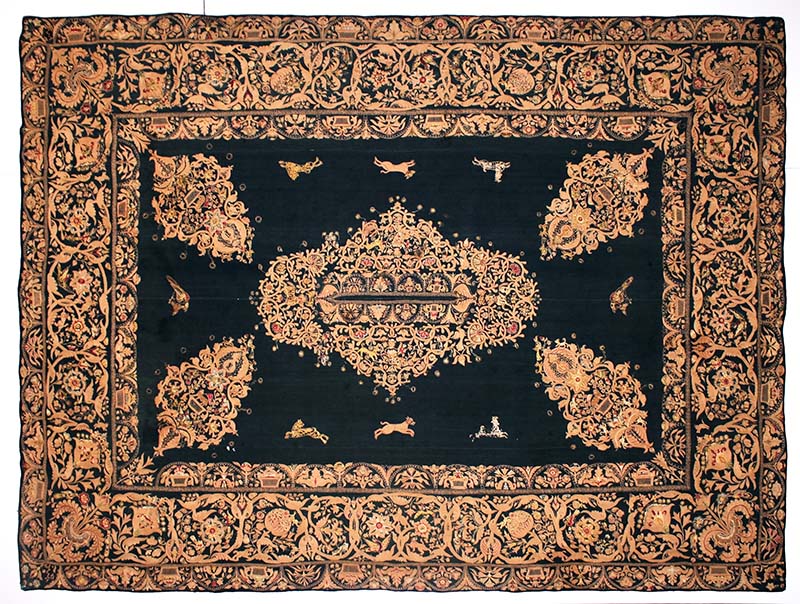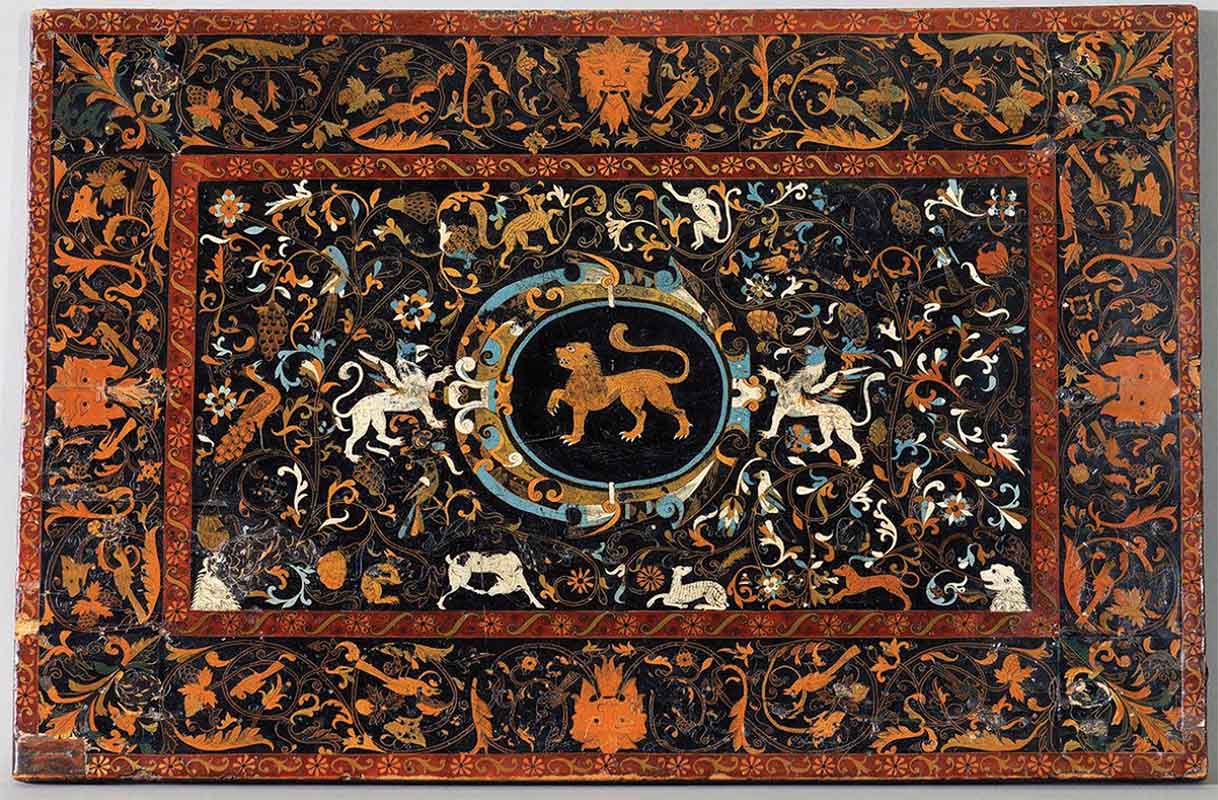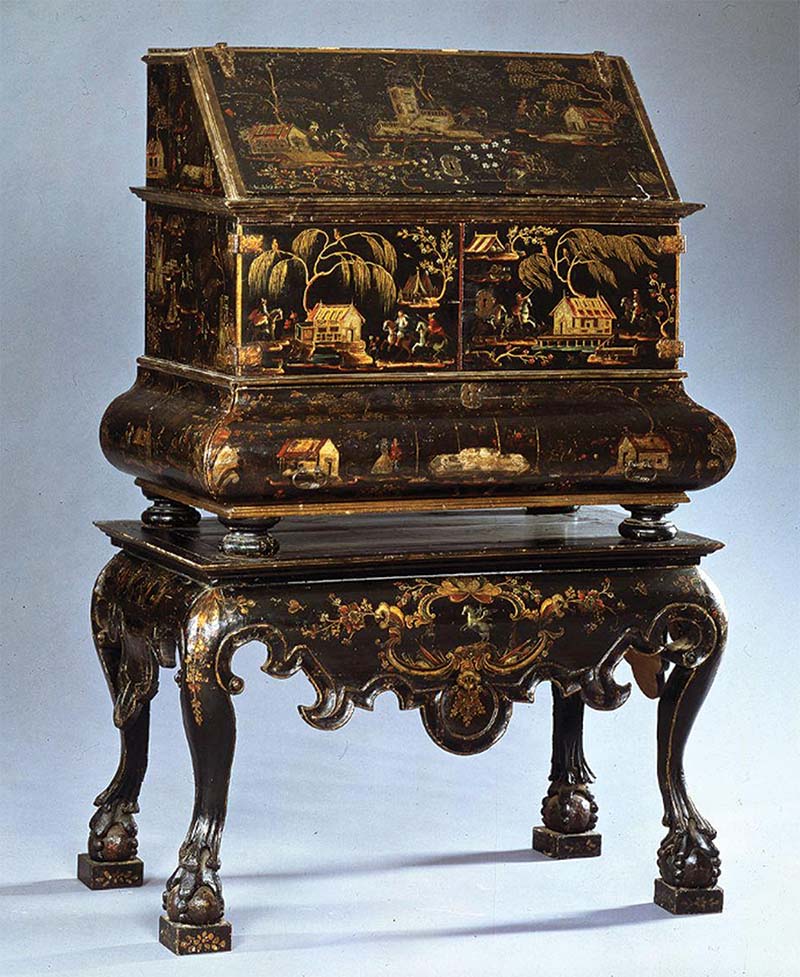Luster, Shimmer, and Polish: Transpacific Materialities in the Arts of Colonial Latin America
Click on images to enlarge them and view captions.
by Juliana Fagua Arias
Between the late 16th and the early 19th centuries, the so-called Manila Galleons connected the Southeast Asian port of Manila with the Mexican counterpart of Acapulco. Direct trade between these two essential nodes of the Spanish empire enabled artistic circulation between Asia and the Spanish Americas, a cultural flow that enriched both sides of the Pacific. Textiles, lacquerware, porcelain, spices, and ivories, among other commodities, flooded into the Americas, while the galleons returned to the Philippines laden mostly with silver and possibly other goods, like cacao, cochineal, and emeralds. Through this bustling trade, not only objects, but also their materialities—technical knowledge, endemic materials, and a collection of values and associations tied to their affective qualities—traveled across the ocean.
Unifying the rich variety of decorative arts that emerged from this transpacific exchange, I have found that the capture, amplification, and reflection of light—generating luster, shimmer, and polish through a deliberate synthesis and rendering of materials—was crucial to the sense of value attached to these objects. For example, an 18th-century Peruvian poncho (figure 1) at the Museo de Arte de Lima combines Chinese silk and Andean camelid fibers, maximizing the shimmering effect of the dyed, smooth threads against a dark indigo background. Similarly, a 17th-century Barniz de Pasto tabletop (figure 2) at the Hispanic Society, made in what is currently Southwest Colombia, employs a white and light-blue colored resin to accentuate details in the design, generating the effect of inlaid, iridescent shells or stones. Finally, an 18th-century writing cabinet made in Pátzcuaro, Michoacán (figure 3), by Purépecha artist Jose Manuel de la Cerda, layers glittering gold leaf against a dusky, lustrous background made of locally produced oils and mineral pigments.
I was fortunate to conduct a series of research trips to Iberian museums and archives with the support of a Decorative Arts Research Grant as well as Cornell’s Einaudi Center for International Studies, the Latin American and Caribbean Studies Program, and the History of Art Department’s Goldring Grant. I visited repositories in Madrid, Seville, and Lisbon, crucial political and commercial hubs of the Iberian empires. Some of the most relevant collections of early modern transpacific decorative arts and material culture are housed in Madrid’s Galería de las Colecciones Reales, Seville’s Archivo de Indias, and Lisbon’s Museu do Oriente. My primary purpose was to compare the objects shown here to larger collections, contextualizing their production and circulation within broader networks of exchange.
To my delight, I encountered a wealth of objects that spoke about the profound material and aesthetic dialogues between Asian and Spanish American makers. Examples of Indo-Portuguese colchas at the Museo Nacional de Artes Decorativas in Madrid and the Museu de Lisboa illustrate the types of South Asian embroideries with which Andean textile makers engaged. Bengali embroideries adorning white cotton bases with light-yellow tussah showcased techniques to achieve luster and shine through contrasting fiber textures. These methods must have resonated with Andean makers, heirs to a longstanding tradition of textile primacy, familiar not only with complex embroidery techniques but with the combination of gleaming camelid fibers with matte cotton.
East and South Asian lacquered and inlaid furnishings, for both domestic and religious use, were particularly popular in the Americas, not only introducing new typologies of furniture, but also distinct ways of conceiving and arranging space. A result of early modern globalized commerce and the need to organize and categorize a higher volume of documents, desks, tabletops, and writing cabinets introduced a corpus of body postures that sanctioned alphabetic literacy as the foremost method of knowledge creation. The aesthetic effects of iridescence and shine generated by the mother-of-pearl inlay or gold leaf layered over inky lacquer must have resonated with Indigenous makers throughout the Americas, who habitually utilized feathers, seashells, gold, and gems for adornment.
Amazon-Andean as well as Purépecha artisans responded to the fashion of Asian lacquer by employing local materials like mopa mopa resin, mineral pigments, and chia oil, because their plasticity, brightness, and color retention afforded the desired chromatic contrast between polished, dark backgrounds, and colorful, metallic, or iridescent motifs. Japanese maki-e lacquerware (characterized by designs sprinkled in gold dust) stimulated the creation of Mexican maque (a technique that recreates the effects of lacquerware using local oils and mineral pigments as opposed to plant resin), and I believe that sparkling mother-of-pearl inlaid furniture inspired Amazon-Andean barnizadores to create jeweled effects with the mopa mopa resin through specific color tones and contrasts.
Thus, luster, shimmer, and polish were essential qualities that reveal the deep engagement between Spanish American and Asian makers, who similarly valued materials’ ability to capture, reflect, and amplify light. Moreover, the material values of these objects—shiny fibers, shimmering gold, and lustrous lacquer and oils—embody and illustrate the Asian and American enticement and allure that entranced Europe, for better or worse, for centuries to come.
Juliana Fagua Arias is a PhD student in the Department of History of Art & Visual Studies at Cornell University. Watch her lecture from the 2025 Emerging Scholars Colloquium on the Decorative Arts Trust’s YouTube channel.
A print version of this article was published in The Magazine of the Decorative Arts Trust, one of our most popular member benefits. Join today!



